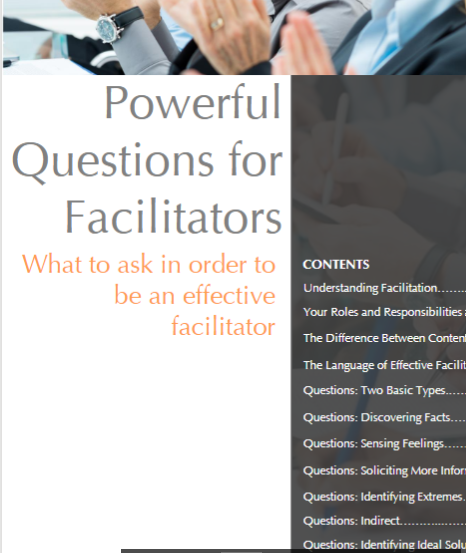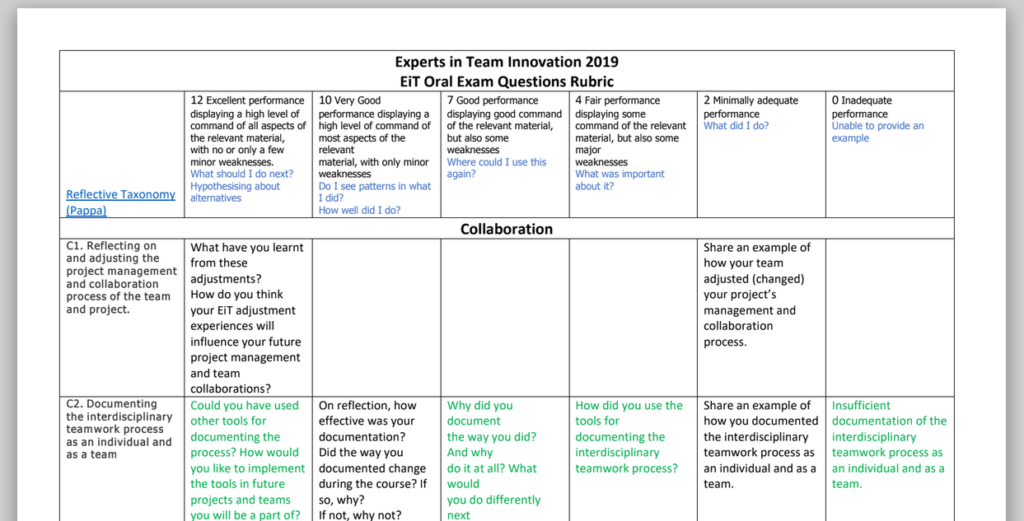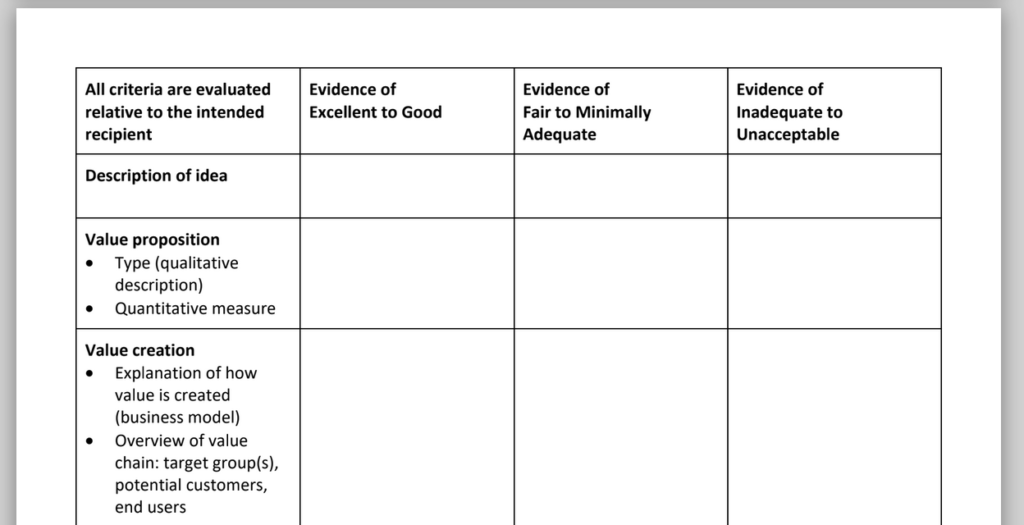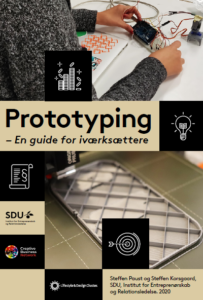Entrepreneurship education and Innovation in educations have over the latest 15 to 20 years expanded from a business schools and design schools to be a relevant for all educations in Higher Education. Some key arguments are: development of students’ ability to crate value, taking and handling risk, and students’ ability to act – also in an uncertain future. Furthermore, focus on students’ development of entrepreneurial competences over the recent years broadens the field into many directions at universities.
The educational possibilities are many and also, it could be interesting for you to look at Intrapreneurship – students entering existing companies.
Often entrepreneurial education is categorised either for, through, and about entrepreneurship pinpointing different educational intensions.
This “teaching I&E”-page unfolds Innovation and Entrepreneurship teaching (I&E) in the context of selected models for Higher Education helping you with course design and securing constructive alignment.
Furthermore some important pedagogical topics related to Innovation and Entrepreneurship teaching is treated separately.
The pages teaching innovation and teaching entrepreneurship (including intrapreneurship) gives you separate resources like tools and knowledge in each area.
The basic standpoints for unfolding I&E content on this page is:
- constructive alignment (securing harmony between the learning objectives, the learning activities and the exam format)
- Hiim ad Hippe’s relational model for analyzing courses
- a constructivist learning approach, and teaching for active learning
- job market requirements for students’ capabilities to collaborate in teams
- integration of online learning activities
Threshold concepts for teachers
- Students should be focussed on creating value. I.e. create economic value, social value, societal value, sustainability, etc.
- Innovation and entrepreneurship teaching can contain many very different dimensions. Right from small introductions in single courses to entire programmes, with the aim of educating candidates with innovation and entrepreneurship profiles. In these, I&E often function as a framework throughout the programme. Thus mirroring the of the above mentioned about for and through which can be displayed both in small setting and whole programmes.
- Entrepreneurship teaching is a lot more than just creating a startup. It is about competences. It can be the development of students’ personal competences, cooperation competences and innovative competences. Therefore, in your course, the goal formulations concerning competences should be right on the money.
- The teaching often involves more key players than yourself: coteachers in your team, company representatives or organizations, alumni, Local startup HUB consultants, pedagogical consultants from the local support center, etc.
- Many different academic competences come into play, and thus, as a coordinating teacher you need to keep your focus at all times. Often, methods from the subjects of innovation and entrepreneurship are used directly as teaching methods. For example, it is quite common to let students go through an innovation process like design sprints or use entrepreneurial methods directly in the processes.
- Students need your help to understand all the different meta layers and the academic knowledge needed when teaching includes innovation and entrepreneurship methods, and to put these methods into perspective when thinking about their future careers.
- Most often you will need to look towards projects and casework, when you teach I&E, and you must remember to let your students take ownership. This will give some exciting perspectives on your role as a teacher, as your role will be much more facilitating and guiding than usual.
Course design
Hiim and Hippe’s relational model is a tool that helps you integrate your reflections on important factors for the course. (Undervisningsplanlægning for faglærere/Hiim H. & Hippe E. Hans Reitzel, 2018)
Framing the analysis with Hiim and Hippes model let us unfold six important angles in relation to I&E teaching
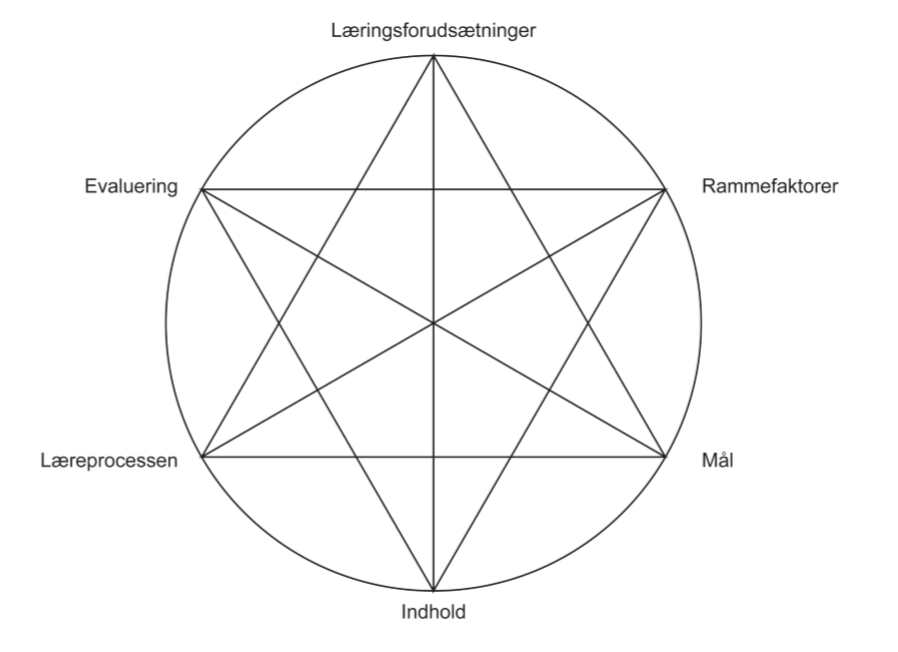
- Prerequisites for learning (læringsforudsætninger),
- Framing for the teaching (Rammer)
- Learning objectives
- Content
- Learning activities
- Exam
Unfold and see the consideration in an I&E context
The following are specific fields of interest related to I&E teaching.
Constructive Alignment
Constructive alignment means that you must fit these three nicely together
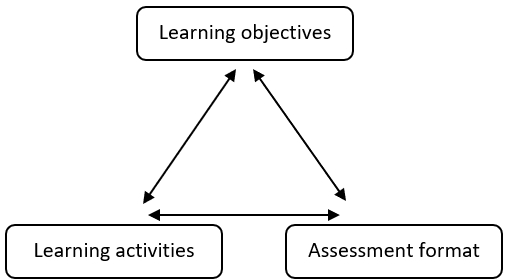
Example: If learning objectives aim at students being creative in designing new products and creating value for a company, you should aim for learning methods that allows students to design and work together with real companies. The examination format could be an “academic defense” for the method that the group chooses in their design process, a recording of the pitch presentation for the company, and finally assessment also of the group responding to the company’s feedback; but then again, notice that the assessment format(s) will have to match the learning objectives and learning methods.
These articles could deliver inspiration for the constructive alignment of your course:
Teaching a sense of initiative and entrepreneurship with constructive alignment in tertiary non-business contexts
by Daniele Morselli, Finland, https://doi.org/10.1108/ET-06-2017-0093
The purpose of this paper is to focus on a course in entrepreneurship education for students studying for a Masters in Educational Sciences at a Finnish university. The…
Redesigning the Assessment of an Entrepreneurship Course in an Information Technology Degree Program: Embedding Assessment for Learning Practices
by Pardede, Eric; Lyons, Judith IEEE transactions on education, 11/2012, Volume 55, Issue 4
Threshold concepts in entrepreneurship – the entrepreneurs’ perspective
by Lucy Hatt, Education & training (London), 2018, Volume 60, Issue 2
Findings: The threshold concepts identified are “I can create value” (or self-efficacy), “I see opportunities” (or opportunity), “I can manage risk” (or risk), “I know what’s important” (or focus) and “I take action” (or impact).
Constructive (mis)alignment in team-based experiential entrepreneurship education
by Scott, Jonathan Matthew et al, Education & training (London), 02/2020, Volume 62, Issue 2
Find inspiration specifically for I&E teaching:
Further topics …
Also, remember to watch the videos which relates to the themes below (opens in a new tab)

